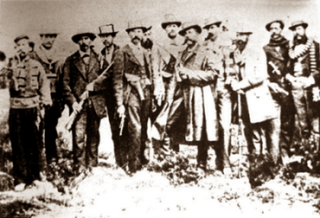 W
WThe Battle of Angamos was a naval encounter of the War of the Pacific fought between the navies of Chile and Perú at Punta Angamos, on 8 October 1879. The battle was the culminating point of a naval campaign that lasted about five months in which the Chilean Navy had the sole mission of eliminating its Peruvian counterpart. In the struggle, two armored frigates, led by Commodore Galvarino Riveros and Navy Captain Juan José Latorre battered and later captured the Peruvian monitor Huáscar, under Rear Admiral Miguel Grau Seminario.
 W
WThe Battle of Chipana took place on 12 April 1879, during the War of the Pacific between Chile and Peru. It was the first naval engagement between both navies and it took place in front of Huanillos, off the (then) Bolivian coast, as the Peruvian corvette Unión and gunboat Pilcomayo found the Chilean corvette Magallanes on its way to Iquique. After a two-hour running artillery duel, Unión suffered engine problems, the pursuit was called off and Magallanes escaped with minor damage. Magallanes was able to complete part of its mission of delivering commissioned papers to Iquique, but unable to complete its reconnaissance mission of finding if there were any guano ships still making commerce in the zone.
 W
WThe Battle of Iquique was a naval engagement that occurred between a Chilean corvette under the command of Arturo Prat and a Peruvian ironclad under the command of Miguel Grau Seminario on 21 May 1879, during the naval stage of the War of the Pacific, and resulted in a Peruvian victory. The War of the Pacific was a conflict that pitted Chile against Peru and Bolivia. The battle took place off the then-Peruvian port of Iquique. The Peruvian ironclad Huáscar, commanded by Miguel Grau Seminario, sank the Esmeralda, a Chilean wooden corvette captained by Arturo Prat Chacón, after four hours of combat.
 W
WThe Battle of Pisagua, was a landing operation of the War of the Pacific, fought on November 2, 1879, between Chile and the combined forces of Bolivia and Peru. The Chilean army commanded by Erasmo Escala, supported by the Chilean Fleet, launched an amphibious assault on the port of Pisagua and successfully drove the defending Bolivian-Peruvian forces, led by Gen. Juan Buendia, back from the shore. They established a beachhead that allowed an initial force of about 1,000 Chilean soldiers in two assault waves to disembark onto Peruvian territory at Pisagua in Tarapacá Department. This region was the principal territory in dispute.
 W
WThe Battle of Punta Gruesa was a naval action that took place on May 21, 1879, during the War of the Pacific between Chile and Peru. This may be labelled as the second part of the Naval Battle of Iquique, although it is described in many sources as a separate battle.
 W
WThe Battle of Río Grande was a small military engagement that took place on 10 September 1879, during the War of the Pacific. A picket of Chilean soldiers and a Bolivian montonera clashed in Rio Grande, around San Pedro de Atacama. Bolivians are defeated, which eliminates local resistance to Chilean occupation in the Litoral Department.
 W
WThe Battle of San Francisco, also known as the Battle of Dolores, was a major battle in the Tarapacá Campaign of the War of the Pacific, fought on November 19, 1879, in the Peruvian department of Tarapacá. A Chilean army under Colonel Emilio Sotomayor had moved via Dolores rail road deep into the desert and was encamped at San Francisco Saltpeter Office, about 30 kilometers south east of the port of Pisagua. Allied forces under General Juan Buendía launched an attack on Sotomayor's army. At the beginning, Bolivian General Carlos Villegas pressed the attack over a poorly defended battery right in the Chilean centre and almost succeeded. Only the arrival of infantry support allowed Colonel José Domingo Amunátegui to hold the position.
 W
WThe Battle of Tarapacá occurred on November 27, 1879, during the Tarapacá Campaign of the War of the Pacific. A Chilean column of 2,300 soldiers led by Colonel Luis Arteaga recklessly attacked an outnumbering Peruvian contingent of 4,500 troops at Tarapacá commanded by Gen Juan Buendía, resulting in a harsh defeat. The Chilean 2nd Line Regiment was the most damaged unit, losing almost half of its force, along with its commander Col. Eleuterio Ramírez and his second in command, Lt. Col. Bartolomé Vivar. Also, the unit lost its banner, which was recovered six months later after the battle of Tacna. Despite the victory, the Allies could not contest for the domination of the Tarapacá department, abandoning it to Chilean control.
 W
WThe Battle of Calama or Battle of Topáter was fought on March 23, 1879 between Chile and Bolivia, and was the first battle of the War of the Pacific.